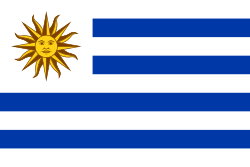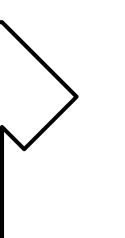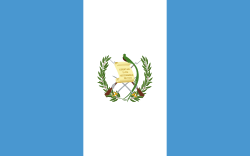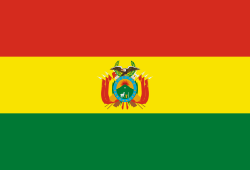Uruguays herrlandslag i futsal
 | |||
| Förbund | AUF | ||
|---|---|---|---|
| Federation | CONMEBOL | ||
| Förbundskapten | Gustavo Sánchez | ||
| FIFA-ranking | 13[1] (5 november 2010) | ||
| Världsmästerskapet (Fifa) | |||
| Deltagna turneringar | 3 | ||
| Bästa resultat | 6:a (omgång två) | ||
| 0 | |||
| 0 | |||
| 0 | |||
| Sydamerikanska mästerskapet | |||
| Deltagna turneringar | 20 | ||
| 0 | |||
| 6 | |||
| 6 | |||
Uruguays herrlandslag i futsal representerar Uruguay i futsal för herrar. Laget styrs av Uruguays fotbollsförbund, Asociación Uruguaya de Fútbol.
Meriter
Världsmästerskapet i FIFA futsal
| År | Värdland | Placering |
|---|---|---|
| 1989 | deltog ej | |
| 1992 | deltog ej | |
| 1996 | 6:a | |
| 2000 | 9:a | |
| 2004 | deltog ej | |
| 2008 | 17 | |
| 2012 |
Copa América - FIFA Futsal
| År | Värdland | Placering |
|---|---|---|
| 1964 | - | |
| 1969 | 4:a | |
| 1971 | ||
| 1973 | ||
| 1975 | ||
| 1976 | ||
| 1977 | 4:a | |
| 1979 | ||
| 1983 | ||
| 1986 | 4:a | |
| 1989 | ||
| 1992 | gruppspel | |
| 1995 | ||
| 1996 | ||
| 1997 | 4:a | |
| 1998 | ||
| 1999 | 4:a | |
| 2000 | ||
| 2003 | 4:a | |
| 2008 |
Källor
- ^ FIFA Futsal Rankning Arkiverad 26 januari 2011 hämtat från the Wayback Machine.
| ||||||||
Media som används på denna webbplats
Chinese Taipei Olympic Flag. According to the official website of Chinese Taipei Olympic Committee, Blue Sky(circle) & White Sun(triangles) above the Olympic rings is neither the National Emblem of the Republic of China, nor the Party Emblem of Kuomintang (KMT), but a design in between, where the triangles do not extend to the edge of the blue circle, as registered at International Olympic Committee in 1981 and digitally rendered in 2013. Besides, the blue outline of the five-petaled plum blossom is broader than the red one. Moreover, the CMYK code of the blue one and the Blue Sky & White Sun is "C100-M100-Y0-K0", and different from the Olympic rings (C100-M25-Y0-K0). Note that it's the only version recognized by IOC.
The national flag of Kingdom of Thailand; there are total of 3 colours:
- Red represents the blood spilt to protect Thailand’s independence and often more simply described as representing the nation.
- White represents the religion of Buddhism, the predominant religion of the nation
- Blue represents the monarchy of the nation, which is recognised as the centre of Thai hearts.
Det är enkelt att lägga till en ram runt den här bilden
Författare/Upphovsman: Bruno-ban, Licens: CC BY-SA 3.0
Primeira camisa da seleção uruguaia de futebol 2010.
Författare/Upphovsman: Abdul Qayyum Ahmad, Licens: CC BY-SA 4.0
Segunda camisa da seleção uruguaia de futebol 2010.
Författare/Upphovsman: Abdul Qayyum Ahmad, Licens: CC BY-SA 4.0
Primeiro uniforme da seleção uruguaia de futebol 2010.
Författare/Upphovsman: Bruno-ban, Licens: CC BY-SA 3.0
Segunda camisa da seleção uruguaia de futebol 2010.
Författare/Upphovsman: Bruno-ban, Licens: CC BY-SA 3.0
Primeira camisa da seleção uruguaia de futebol 2010.
Författare/Upphovsman: Abdul Qayyum Ahmad, Licens: CC BY-SA 4.0
Segunda camisa da seleção uruguaia de futebol 2010.
State Flag of Peru.
Författare/Upphovsman: Bruno-ban, Licens: CC BY-SA 3.0
Segunda camisa da seleção uruguaia de futebol 2010.
Författare/Upphovsman: Bruno-ban, Licens: CC BY-SA 3.0
Primeira camisa da seleção uruguaia de futebol 2010.
Författare/Upphovsman: Abdul Qayyum Ahmad, Licens: CC BY-SA 4.0
Primeiro uniforme da seleção uruguaia de futebol 2010.
Författare/Upphovsman: Bruno-ban, Licens: CC BY-SA 3.0
Segunda camisa da seleção uruguaia de futebol 2010.



































